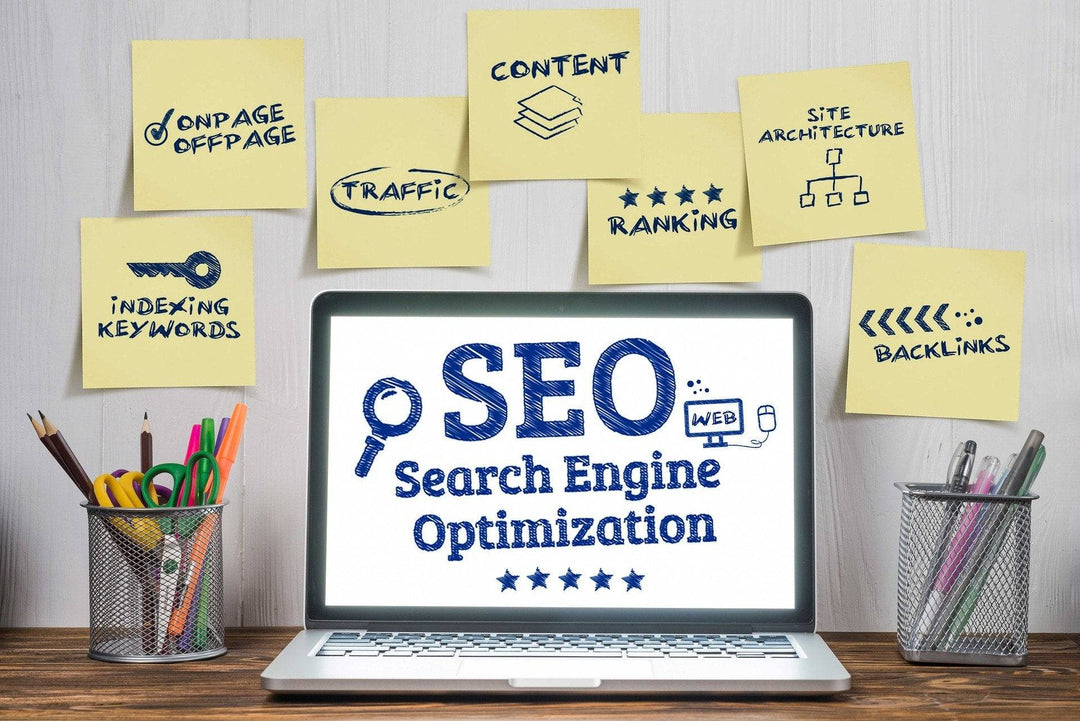Frequently Asked Questions
1. Why is a strong social media presence important for eCommerce?
2. How can I understand my audience effectively?
3. Which social media platforms should I focus on for my Shopify store?
4. What types of content should I create to engage my audience?
5. How can I track the effectiveness of my social media strategy?
In today's digital age, having a strong social media presence is crucial for eCommerce success. Social media can be a potent tool in driving traffic to your Shopify store, expanding your reach, and increasing sales. By using targeted strategies specific to each platform, you can effectively engage your audience, build brand loyalty, and ultimately convert followers into customers. This article will explore how to utilize social media to drive traffic to your Shopify store, along with essential tips for implementing Google Advertising Management and eCommerce SEO.
Understand Your Audience
The first step in any successful social media strategy is understanding your audience. Without knowing who you're targeting, your efforts may be in vain. Utilize analytics tools provided by various platforms to collect data on your followers’ demographics, interests, and behaviors. This information is vital for crafting content that resonates with them.
Gathering Insights
Here are some ways to gather insights about your audience:
- Analyzing Social Media Analytics: Platforms like Facebook, Instagram, and Twitter offer analytics dashboards that can help you understand who your followers are.
- Engaging with Followers: Regularly engage with your audience through polls, questions, and comments to gain deeper insights into their preferences.
- Competitor Analysis: Keeping an eye on your competitors can provide valuable insight into who their audience is and what strategies they are utilizing.
Select the Right Platforms
Not all social media platforms are created equal, and choosing the right ones for your business is crucial. Depending on your target audience and the nature of your products, some platforms may be more effective than others. For instance, visuals-driven platforms like Instagram and Pinterest are ideal for fashion and lifestyle products, while B2B brands may find LinkedIn more beneficial.
Key Platforms to Consider
Here are some popular platforms and what they bring to the table:
- Facebook: Great for building a community and sharing updates through posts, videos, and live streams.
- Instagram: Perfect for showcasing products through high-quality images and stories to engage users visually.
- Twitter: Useful for real-time updates, engaging in conversations, and sharing links to your store.
- Pinterest: Exceptional for driving traffic through pinning eye-catching graphics or photos of your products with links back to your store.
- LinkedIn: Best suited for B2B marketing, sharing industry insights, and connecting with other professionals.
Creating Engaging Content
Once you have selected the platforms to use, the next step involves creating engaging content that prompts your audience to click through to your Shopify store. This content should be informative, entertaining, and align with your brand voice. Consider different formats to keep your audience engaged.
Content Formats to Try
- High-Quality Images: Use captivating images that showcase your products in a well-lit and aesthetically pleasing manner.
- Videos: Create short videos that either demonstrate product usage or tell a story about your brand.
- Infographics: Share useful statistics or tips related to your industry that lead back to your store for more information.
- Blog Posts: Write informative articles that can be shared across your social channels, driving traffic back to your Shopify site.
Leveraging Hashtags
Hashtags play a significant role in enhancing the discoverability of your posts. They categorize content and help users find topics they are interested in. However, it is crucial to use hashtags strategically rather than excessively.

Best Practices for Hashtags
- Use Relevant Hashtags: Ensure your hashtags are closely related to your content and target audience.
- Research Popular Hashtags: Look for trending hashtags within your niche to widen your reach.
- Create a Brand Hashtag: This allows your audience to engage with your brand uniquely and can foster a community around it.
Engagement is Key
Simply posting content isn't enough; engagement is vital for success. Engage with your audience by responding to comments, sharing user-generated content, and liking or commenting on their posts. This builds a sense of community and encourages your followers to interact with your brand more closely.
Strategies for Engagement
- Ask Questions: Post questions in your captions to encourage followers to share their thoughts or experiences.
- Run Contests: Contests can increase engagement and drive traffic by encouraging followers to share your posts or tag friends.
- Use Polls: Polls on Instagram Stories or Twitter can prompt discussions while also gathering opinions.
Collaborate with Influencers
Influencer marketing is an effective way to expand your reach and drive traffic to your Shopify store. Partnering with influencers in your niche can provide a substantial boost to your brand awareness. Influencers already have established credibility and a following that trusts their recommendations, which can lead to higher conversion rates.
Finding the Right Influencer
Here are tips for finding the right influencer for your brand:
- Look for Authenticity: Choose influencers whose values and style align with your brand identity.
- Focus on Engagement: An influencer with high engagement rates may be more beneficial than one with just a large follower count.
- Evaluate Their Content: Ensure that the influencer's content resonates with your target audience and has a consistent visual style.
Utilize Paid Advertising
While organic reach is essential, sometimes, investing in paid advertising can be a game-changer. Platforms like Facebook and Instagram offer highly targeted advertising options that allow you to reach specific audiences based on demographics, interests, and online behaviors. This is where Google Advertising Management can come into play, providing advanced targeted strategies to amplify your visibility.
Benefits of Paid Advertising
- Increased Brand Visibility: Paid ads can significantly increase your brand's visibility, putting it in front of potential customers who might not have discovered your store otherwise.
- Targeted Audience: You can tailor your ads to reach the specific audience most likely to convert, reducing wasted ad spend.
- Measurable Results: Analytics tools help you assess the success of your campaigns, allowing for quick adjustments to optimize performance.
Implementing eCommerce SEO Strategies
An essential aspect of leveraging social media for your Shopify store is integrating eCommerce SEO strategies. SEO helps improve your store’s visibility on search engines, making it easier for potential customers to find your products during their online searches. When combined with a solid social media strategy, this can lead to a significant increase in relevant traffic.
SEO Best Practices for Your Store
- Keyword Research: Identify keywords relevant to your niche and incorporate them naturally into your website content and social media posts.
- Create Unique Product Descriptions: Avoid using generic descriptions. Instead, write unique ones that include relevant keywords and highlight your product’s benefits.
- Optimize Images: Use alt text for all images to boost your SEO while also providing more accessibility.
Track and Analyze Your Efforts
The final piece of the puzzle is tracking your performance. Use analytics tools available on the platforms you use, as well as Google Analytics, to gauge the effectiveness of your social media strategy. These insights will help you understand what works and what doesn’t, enabling you to refine your approach.
What to Monitor
- Engagement Rates: Track likes, shares, comments, and overall engagement to see what type of content resonates most with your audience.
- Traffic Sources: Use Google Analytics to identify where your traffic is coming from and which social media platforms yield the best results.
- Sales Conversion: Monitor how many visitors from social media convert into paying customers to understand ROI.
Start Strengthening Your Social Media Strategy Today!
Harnessing the power of social media can significantly impact your Shopify store’s traffic and growth. By understanding your audience, creating engaging content, and leveraging tools like Google Advertising Management and eCommerce SEO, you can create a solid foundation for success. Remember, building a strong social media presence takes time, but with persistence and strategy, the potential for increased traffic and sales is limitless.
Get started today, and watch your Shopify store thrive through the effective utilization of social media! Your business deserves the spotlight, and with these strategies, you're well on your way to making that a reality.






Leave a comment